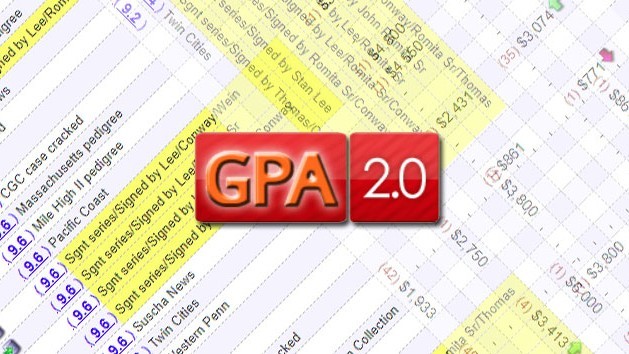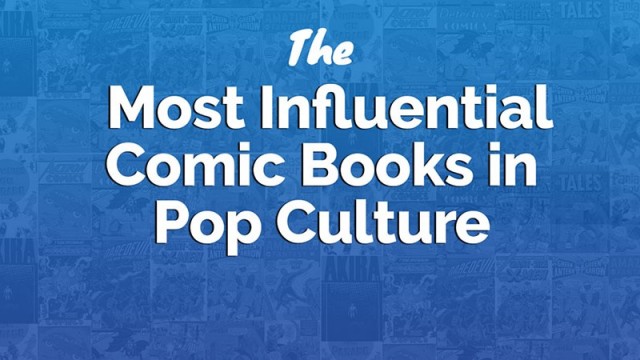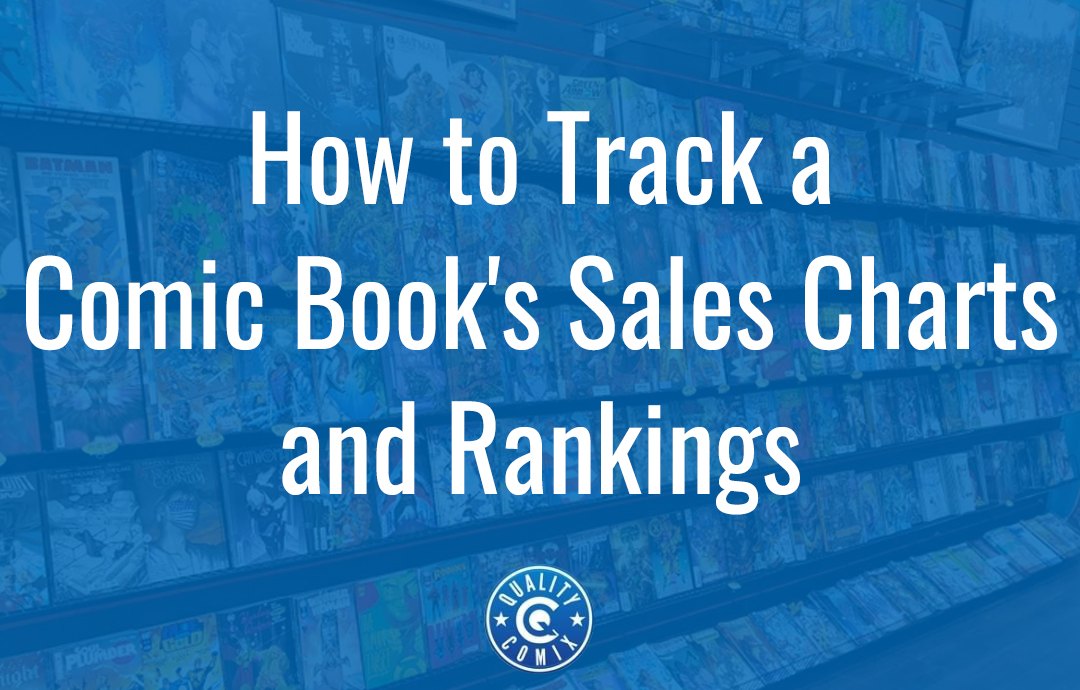
A key part of being a comic book vendor, collector, reseller, or dealer is having an understanding and awareness of the market. You'll want to track the market as a whole – knowing when people are buying, when people are selling, when everything is trending up or down – but you also want to track specific books. High-value books you're hanging onto can rise and fall, and if you want to sell, you should look for a rise. Newer books, especially limited prints and editions, may have flash-in-the-pan moments you can capitalize on if you're watching. Even knowing what new series are trending and popular can help you predict where to invest.
Table of Contents
Official Sales Charts
First, let's talk about sales charts. Sales charts were published tables of sales data from various comics and publishers. Diamond used to be the gold standard for sales data, publishing tables like these so you could see which publishers are trending and more.
Unfortunately, Diamond stopped being the distributor for DC comics and media, which meant they lost access to the information they needed to make those charts, and while they tried valiantly to piece something together to keep them going, it didn't quite work out.
ComicChron, headed up by John Jackson Miller, tried to pick up where Diamond left off. Unfortunately, the data necessary to create useful sales charts and data just isn't available. The reports they produced are fine, but these days, the reports are more just lists of what's available rather than ranked sales data.
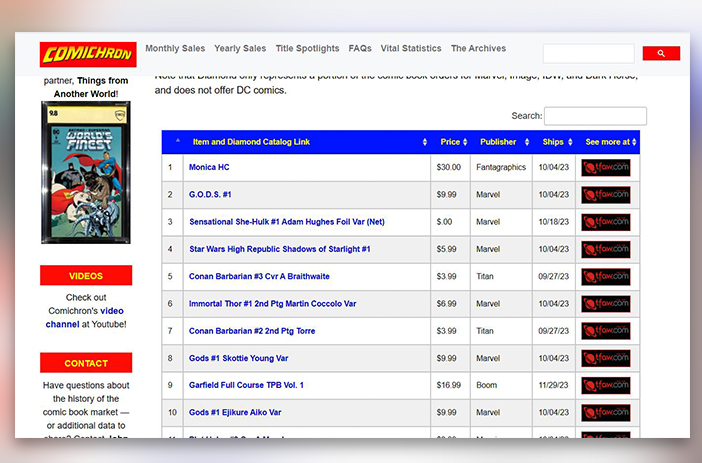
Image source: ComicChron
Now, don't get me wrong; these are still very useful charts for retailers and others in the comics market. But, they only tell a small portion of the story. They also have historical data kept for the sake of records, if that's interesting to you.
Clickbait Sales Information
Another issue in searching for sales data is the number of sites publishing "sales" "data" that really isn't anything of the sort. An example cited by Comics Beat is a Screen Rant article publishing the top-selling Image comics of all time, and it lists #1 as a comic with less than half a million sales. For anyone aware of Image's history, in the 90s, Image was selling over a million copies of practically everything.

Clickbait articles make great headlines and are wonderful for those native advertising boxes that show up at the bottom of other posts powered by Taboola or whoever, but – as anyone who has ever clicked one can attest – they're worthless at best and a time-consuming, frustrating, and ultimately unresolved exercise in display ad spam at worst.
In general, you want to make sure to vet any data you get and try to avoid getting it from third-party sources without citations.
Sell-In Vs. Sell-Through
An important distinction in comics data worth keeping in mind is that most sales data prior to now has been sell-in data, not sell-through data. This is useful data, but it doesn't tell the whole story of the comics industry. To put it simply, we comics vendors and collectors have always only had part of the picture.
Sell-in data is sales data from the publishers about how many copies of comics are ordered by retailers. This is good data because it can indicate a few things, most notably the maximum possible number of copies of a comic that could exist.
Imagine a scenario where a publisher expects a comic to be a hit and prints a million copies, but only a few thousand are ordered by retailers, and an unknown number of those are purchased. Collectors might view this comic as a lot rarer than it is because the number they see about orders is low. The publisher could still have a warehouse full of them. Or, of course, the publisher could have destroyed the overstock. The numbers, either way, don't tell the whole story.

The inverse is sell-through data. Sell-through data is actual sales numbers from retailers. If every retailer orders 100 copies of a book but only sells 10 of them, the actual number in the hands of collectors is 10% of what you might expect based on sell-in data.
Collectors generally value the sell-through data, but publishers currently don't seem keen to release it. That means if any sales charts are going to be published in the near future, they are likely going to be sell-through data. Critically, that means the way we view and deal with the data needs to change, and those who aren't aware of the difference may be caught unaware.
Making Use of Sales Chart Data
If you're in comics as a hobby, collector, or reseller, chances are the sales chart data is going to be useful to you in some way. The trick is knowing how and why.
Sales chart data can be used in a variety of different ways. You can see market cap information and know how many copies – roughly, anyway – exist of a given comic. This can help you estimate how valuable (or not) a comic can be and whether it's likely to grow over time. For older comics, a lot of this information is more readily available and well-analyzed. For newer comics and new releases, especially in the last year, it's a lot fuzzier.
If you're looking for investment opportunities in valuable comics, you have a few options, and none of them are likely to be centered on new comics with fickle data. You're going to be looking into older comics, and you're going to want to forecast those against upcoming media properties like movies and TV shows, not other comics. New Avengers comics coming out aren't going to boost the value of older Avengers comics, after all. That kind of thing only happens if it's the resurrection of a formerly beloved franchise, and many of those have already been mined out.
![]()
Truthfully, sales chart data is useful if you know what you're doing with it, but it can also be tricky to use in a way that's actually useful. There's a reason that many of the people using it are monetizing the articles they write about it, and general discussions among fans are more focused on just enjoying comics.
Now, that said, if you deal in modern comics and you need to have some idea of what's trending and what isn't, what you should stock and what to avoid, sales data can be a lot more useful. At the same time, as a vendor, you should have ready access to things like your own sales data, the requests made by customers, and geographic trends in your area.
If you want to harvest the sales data that's available, we've put together the major options available to you. Fair warning: there's not all that much available anymore. We're currently entering a "dark age" of hidden data, and it'll be interesting to see how that shakes out in the next few years.
Tracking Sales Charts and Data Yourself
Unfortunately, even as a retailer, there's only so much data you can access. Here are data sources you can (usually) trust, though the full picture of the industry is hard to piece together even with all of these sources.
ICv2 Sales Records
ICv2 is one of the leading news and data outlets for comics and collectibles. They paused their data collection and publication for a while back last year because of a reporting issue with their data sources, but they brought it all back early last year.

The current slate of ICV2 data is sell-through data gathered from point-of-sale system reporting and systems like Circana BookScan. Every month, they publish sales data posts like this one, listing the top-selling comics and comic-adjacent media. They have a variety of different ways of sorting it all and some keen analysis throughout, so they're always worth checking out.
Notably, this data doesn't actually include sales numbers, just ranking. If you know numbers for anything specifically, you can do some rough estimation, but the dearth of hard data is just a fact of life for collectors these days.
CBR Analysis
Comic Book Revolution has had its ups and downs. They're responsible for some of those clickbait Top X articles that are wildly wrong, but they also have some pretty insightful analysis of sales data. That's kind of just how it goes when you're a larger publisher with a variety of different writers working for you.
CBR used to publish ICv2 data directly, but since ICv2 asked them not to republish, now they just link to the ICv2 reports directly. Instead, they take some highlights of the data and analyze them, what they mean for various publishers, lines, and books, and go from there.
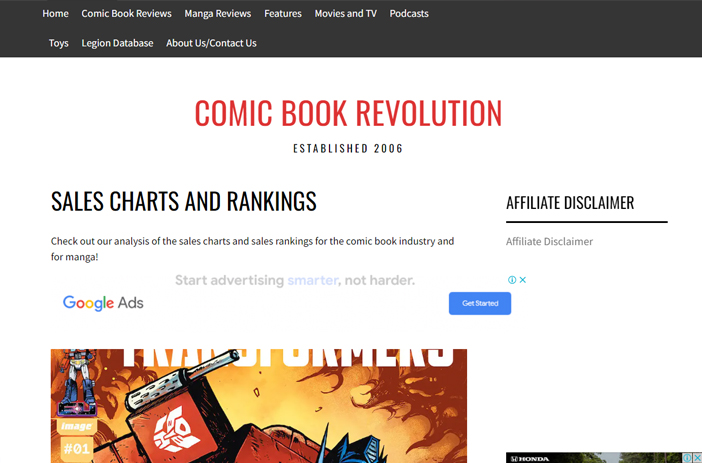
Reading through one of these reports can be almost daunting in just how much is being published every month, from all the different publishers and sub-publishers and indie publishers and webtoons and more. It's no wonder that comic collectors and resellers often try to specialize!
GoCollect
A lot of sales data and charts are, by necessity, focused on new releases. For those of us who primarily deal in older comics, though, the new releases aren't as important. They can be useful numbers to see what kinds of characters and stories are trending, which can forecast interest in older stories with those characters, but there's rarely so clear-cut a line from new releases to older book sales.
GoCollect is probably one of the best aggregators for sales data of collectible comics available today. You can look up specific comics, but you can also see the hot and trending comics, which is some much more useful data for resellers and collectors.
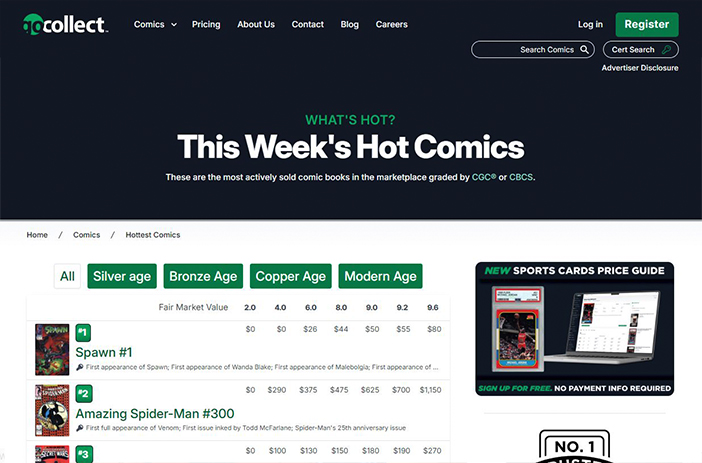
For each individual comic, you get a page like this, which is broken down by grade. You can see the number of known copies at that grade, the number of recent sales, a tracked fair market value, and the one-year, 90-day, and 30-day average sale prices for those comics at that grade. To the side, you can see a scale chart showing the average number of any given grade, so you can see if a given grade is above the average or not. A lot of the data is hidden behind a paywall, but it's a very useful wall to pay to pass, indeed.
The biggest downside to GoCollect is just their focus on graded comics. Since they're only concerned with graded comics, ungraded comic data isn't tracked or aggregated; those kinds of sales numbers you need to get elsewhere.
Custom Data Sources
You can also put together your own custom tracking.
One option is to track eBay sales. You can pick specific comics you want to track and use a tool like ShelfTrend to harvest data from recently sold listings. It can be a pain to comb through, but once you get it set up, it's not too bad.

You can also use web monitoring tools like Google Alerts to track recent mentions of noteworthy comics. You have to set these up manually, and it only notifies you if new content mentioning those comics is published, which is only sporadically helpful.
There are also a handful of sales and vendor data sources, like the above-mentioned Circana BookScan. You need to qualify to be able to use them, but if you do, having access to direct sales data can be very helpful.
QualityComix Price Guides
Another source of data you can use is our own price guides. We track the sales and pricing information of the comics that pass through our hands, and with over 10,000 high-end and valuable comics in our database, there's a pretty good chance that the comics you want to track are there for you to see.
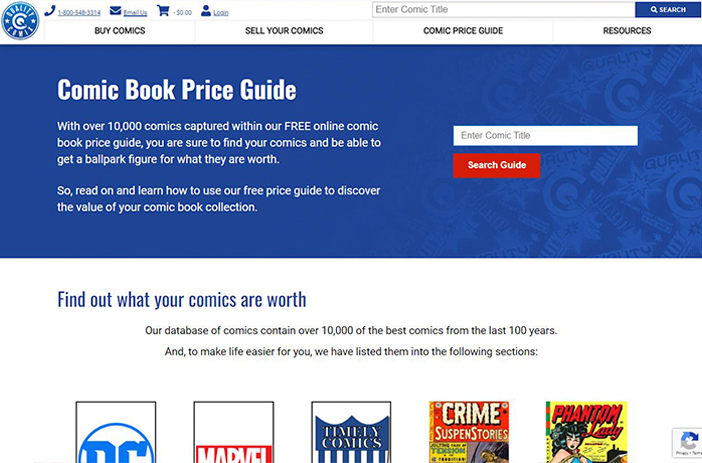
To use our price guide, all you need to do is visit the guide page and search for the comic you want to find. From there, you can see all of the related comics, the number of issues in a comic line we track, and, of course, the pricing information we've gathered. Check it out!

 Brent Moeshlin
Brent Moeshlin
